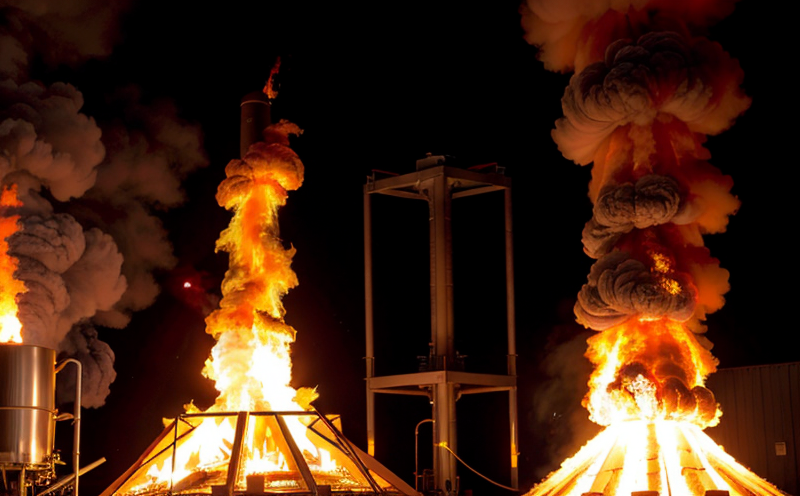Clothing Flammability Testing
In today’s world of increasing safety standards and regulatory compliance, ensuring that clothing is flame-resistant is a critical aspect. Clothing flammability testing evaluates how textiles respond to fire under controlled conditions, providing valuable data on the likelihood of ignition and the intensity of burning. This service is especially important for industries such as fashion, retail, and any organization dealing with protective gear.
The process typically involves exposing fabric samples to specific ignition sources like gas flames or heat plates, then measuring various parameters including burn time, flame spread rate, char depth, and after-flame duration. These tests help determine the inherent flammability of materials used in clothing items ranging from everyday wear to industrial protective apparel.
Accurate testing is essential because it directly impacts consumer safety by preventing potential fires caused by accidental ignition during normal use or in emergency situations. Furthermore, compliance with international standards such as ISO 13565-1 and ASTM D6473 ensures that products meet stringent quality benchmarks set forth by governing bodies.
Our laboratory employs state-of-the-art equipment calibrated according to these guidelines, ensuring precise results every time. Our experts can guide clients through the entire process from selecting appropriate test methods to interpreting outcomes accurately. By partnering with us, businesses gain access not only to reliable testing but also expert advice tailored specifically for their needs.
Why It Matters
Clothing flammability testing holds immense significance due to its direct impact on public safety and compliance requirements. Non-compliant garments pose serious risks, especially in environments where fire hazards are present or when exposed to ignition sources such as open flames, cigarettes, sparks, etc.
- Reduces risk of burns: Flame-resistant clothing acts as a barrier against heat transfer, minimizing the chances of severe injuries resulting from contact with flames.
- Promotes compliance with regulations: Many countries have strict laws mandating specific flammability limits for certain types of garments based on age groups or intended use. Non-compliance can lead to legal penalties and reputational damage.
- Enhances brand reputation: By demonstrating commitment to safety, companies build trust among consumers and stakeholders alike.
The results from our testing not only help avoid costly recalls but also protect end-users by providing them with safer products. Moreover, these tests aid manufacturers in improving product designs continuously, leading to enhanced performance across all aspects of clothing manufacturing processes.
Scope and Methodology
The scope of our flammability testing covers a wide range of materials commonly used in textile production for apparel items. This includes natural fibers like cotton and wool as well as synthetic options such as polyester, nylon, and spandex.
| Test Type | Description | Standard |
|---|---|---|
| Vertical Burning Test (ASTM D6413) | Measures flame spread rate on vertically oriented specimens under controlled conditions. | ASTM D6413-21a |
| Cigarette Ignition Resistance Test (ISO 5928) | Evaluates the ability of fabrics to resist ignition by a cigarette flame. | ISO 5928:2007 |
| Flame Spread Index Test (ASTM E1350) | Determines the relative flammability based on visual observation and heat measurements. | ASTM E1350-08(2019) |
For each test, we follow stringent protocols outlined in relevant international standards. Our team prepares samples meticulously according to specified dimensions and conditions before conducting the actual tests using certified equipment.
The methodology involves exposing prepared specimens to defined ignition sources while recording critical parameters like time to ignition, duration of flame propagation, heat release rate, etc. Afterward, we analyze these data points against accepted thresholds defined by respective standards to arrive at conclusive results.
Industry Applications
- Fashion & Apparel: Ensures compliance with flammability regulations for consumer goods.
- Textile Manufacturing: Helps producers improve fabric properties through iterative testing and refinement.
- Firefighting Equipment: Validates the protective capabilities of uniforms against fire hazards.
- Outdoor Gear: Evaluates materials used in outdoor clothing designed to withstand harsh weather conditions including potential ignition sources.
Clothing flammability testing is crucial across various sectors given its broad applicability. From ensuring safety standards are met to enhancing product performance, this service plays an integral role in safeguarding users and upholding industry integrity.





